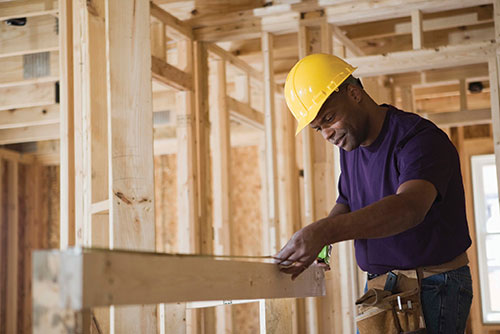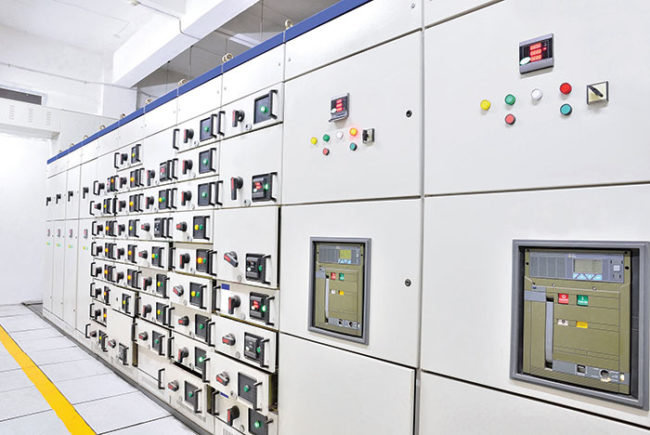
Every construction project poses such potential risks to patients and staff as exposure to dust, noise and vibration, odors and chemicals.
The health facility manager’s role in infection prevention and patient care has become increasingly more important as health care-associated infections (HAIs) have become a growing concern.
There are four facility-related infection control risks that are the most critical because they present the highest risk to patients, are the most common or have received increased focus and scrutiny by regulatory agencies.
By properly addressing these risks, health facility managers can directly improve patient outcomes.
Four risks
The four risks, which range from airflow problems to construction debris to water system issues and beyond, emphasize the important role that health facility managers play in infection prevention. They include:
1. Improper pressurization and ventilation of sensitive patient areas. Ventilation is critical to infection prevention and it is essential that facility managers properly regulate pressurization in their facilities to protect patients, staff and visitors. The importance of pressurization is underscored by the Joint Commission’s increased enforcement in this area in recent years.
Simply put, positive pressurization protects patients and negative pressurization protects caregivers and controls odors. To protect patients who are immunocompromised or who’ve undergone an invasive surgery, airflow should be directed out of the room in which the patient is housed to protect them from infections. Operating rooms are a prime example of a space that needs to be kept at positive pressure. In patient isolation areas, where a patient is the potential source of infection, airflow should be directed from outside the room into the patient room. This is also true of areas such as soiled utility rooms where odors need to be controlled.
You may also like |
| Understanding ASHRAE's legionellosis requirements |
| ES operations during construction projects |
| HVAC requirements for medical spaces |
|
|
The Facility Guidelines Institute, which incorporates the American Society of Heating, Refrigerating and Air-Conditioning Engineers (ASHRAE) Standard 170, Ventilation of Health Care Facilities, identifies specialized ventilation areas and additional requirements, including relative humidity and air changes per hour. Facility managers must be knowledgeable of these requirements and ensure compliance.
Ensuring proper pressurization and compliance begins with an up-to-date inventory of all specialized ventilation areas (e.g., operating rooms, pharmacies, endoscopy and dirty utility rooms). A testing and balancing program must be in place to validate pressurization in these areas. High-risk areas like operating rooms should be inspected and tested at least weekly or have real-time monitoring in place. Less critical areas like soiled utility rooms can be tested annually. Routine monitoring must also be part of the program.
Lastly, education of staff on patient care floors goes a long way in helping to maintain pressurization. Staff need to be informed of areas where doors must be closed to maintain negative pressurization or areas that have an anteroom or a sterile location where specific procedures must be followed.
2. Dust and contaminants from construction sites. Every construction project poses such potential risks to patients and staff as exposure to dust, noise and vibration, odors and chemicals associated with construction activity. The Joint Commission views construction and maintenance activities as a significant risk and requires hospitals to perform an Infection Control Risk Assessment (ICRA) to evaluate necessary controls prior to beginning each construction project.
ICRA has been in place in various forms for more than 20 years. Yet, there are still many vulnerabilities in this area that can lead to infections. One of the primary causes of deficiencies in the ICRA process is a breakdown in communication among departments. Facilities managers must work with multiple departments, including infection control, environmental health and safety, and the construction team to conduct an ICRA for all construction and renovation projects to determine necessary safety and pressure control procedures. Due to their varied disciplines, these departments often speak different languages and often have competing priorities. This breakdown in communication can result in disconnects in the ICRA process, so it must be overcome.
Determining proper pressurization for large-scale, complex construction projects is especially challenging. Facilities managers must be aware of all areas adjacent to the construction site and take into account their specific function (e.g., tuberculosis room and isolation room) and ventilation needs. They also should use industry best practices when implementing isolation methods to achieve negative pressurization. There are different isolation methods based on the unique setup and available infrastructure of each room. Additionally, there are considerations and disadvantages to each method that facilities managers should consider before implementing.
A common mistake is the use of anterooms and not properly depressurizing the construction site. The construction site must be at a relative negative pressure, and pressure sensors should be placed in the correct locations so that they confirm that the construction site is at a negative pressure with respect to adjacent areas, not just the anteroom.
Conduct routine, at least weekly, formal audits of construction sites to ensure the safety of patients, visitors, contractors and employees. These tours can be led by a multidisciplinary team or by dedicated personnel trained to recognize the various risks encountered on a hospital construction site. A standardized checklist ranked by risk is key so that data can be tracked and trended over time to identify weaknesses in the program.
A valuable strategy for improvement is to use inspection metrics to generate contractor report cards to measure the effectiveness of the program and to help improve contractor training where it matters most. This will require buy-in from contractors. The benefit to contractors is that it shows them exactly how they will be evaluated, and illustrates that all contractors will be evaluated on the same basis.
For large-scale construction projects and those near sensitive patient areas, an automated construction air-quality monitoring program should be considered in addition to inspections. Automated monitoring delivers 24/7 protection and instant alerts to the response team and other key personnel. These alerts give early warning of any potential containment or control failure so that it can be resolved before it negatively impacts patients, staff and hospital assets. Additionally, it helps to avoid costly, unexpected project shutdowns and delays.
Sensors can be configured to monitor a variety of key parameters such as dust, pressure, temperature, humidity, carbon monoxide and volatile organic compounds. The secret to a successful automated monitoring program is setting the data collection algorithms properly for each parameter. If alerts are constantly or falsely generated, it leads to alarm fatigue for the response team.
3. Legionella growth in utility and potable water systems. The complex air conditioning and water systems in hospitals must be carefully managed to prevent the growth of Legionella and a possible outbreak. Legionella bacteria proliferate in water that is between 68 and 124 degrees F as well as in stagnant water. Cooling towers, condenser water systems (i.e., chillers, tower basin and sump) and potable water systems (i.e., water tanks, showers and faucets) are ideal environments for Legionella growth.
ASHRAE Standard 188, Legionellosis: Risk Management for Building Water Systems, details the minimum risk management requirements for Legionella in utility and potable water systems and is the first step in standardizing the approach to Legionella prevention. In summary, the standard requires hospitals to establish a water management team and assign responsibilities, survey facilities, implement control measures, and validate and document that the risk management program is working.
As part of their maintenance program, facilities managers should conduct a walk-through of their facilities to identify locations of at-risk populations and create a current inventory of cooling towers, dead legs and other elements. Storage tanks and dead legs are common culprits of stagnant water. Areas under renovation with limited access and areas where patients do not routinely use the showers or sinks should also be taken into account. A flushing program should be implemented in areas with low use to prevent Legionella growth and because the local city or municipality may be adding chlorine to the potable water systems, which is effective only when it is well-mixed.
To prevent Legionella growth, cold water should be stored and distributed at less than 68 degrees F. Hot water should be stored at greater than 140 degrees F and distributed at greater than 124 degrees F. Hot water lines should be insulated to prevent the temperature from going below 140 degrees F and to prevent the hot water lines from heating the water in the cold lines.
Cooling towers should be inspected and cleaned routinely to further prevent the growth of Legionella. A quarterly frequency is recommended for cooling towers that operate throughout the year, and semiannually for those used during only part of the year. Preventive maintenance should include mechanical cleaning and disinfection. Both inspection and physical cleaning are recommended because cooling towers accumulate scale buildup, which limits the effectiveness of the disinfectant.
4. Contamination of sterile compounds in hospital pharmacies. The U.S. Pharmacopeial Convention’s USP 797 is a set of guidelines, procedures and compliance requirements for compounding sterile preparations (CSPs). While USP 797 sets federally enforceable legal standards, not all states have adopted regulations governing sterile compounding. Facilities managers first must determine if it is applicable to their states.
From a facility management perspective, the requirements of USP 797 are focused on establishing and maintaining a safe environment for preparing CSPs. A compounding facility generally consists of separate, designated operational clean areas, including an ante-area, a buffer area and a primary engineering control (PEC), or a segregated compounding area containing a PEC where CSPs are prepared. Controls must be in place to limit the potential for contamination. Hospitals also are required to certify PECs and test the air quality of the compounding area every six months.
Pressure relationships, airflow and cleanliness are vital to maintaining the cleanroom condition required in each space. Pharmacies preparing nonhazardous drugs should be positively pressurized to the anteroom, which is positive to the corridor or adjacent space to prevent contamination. Cleanrooms where radiopharmaceutical drugs are prepared are negative to the anteroom, which is positive to the prep room and the adjacent spaces, similar to the hazardous drug prep rooms. Pharmacies preparing hazardous drugs, such as chemotherapy drugs, should be negative to the anteroom.
A self-assessment or professional gap analysis of USP 797 compliance as it relates to the physical environment is a valuable exercise to prevent the contamination of drugs.
Facility-related actions
Facility managers need to assess and understand infection risks and establish programs to mitigate those risks effectively. Open lines of communication with other departments to bring the necessary areas of expertise together is key to developing effective infection prevention programs.
Based on the highest risk to patients and most common causes of infections, proper pressurization, a preventive maintenance program for Legionella, and compliance with pharmacy regulations are essential components for preventing infections related to the physical environment. Additionally, facility managers should ensure that the ICRA process is implemented properly for every construction and renovation project.
These programs require time and resources to develop and maintain, but are well worth the investment to protect patients and staff.
Bryan Connors, CIH, is health care practice leader at Environmental Health & Engineering Inc., Needham, Mass. He can be reached at bconnors@eheinc.com.




